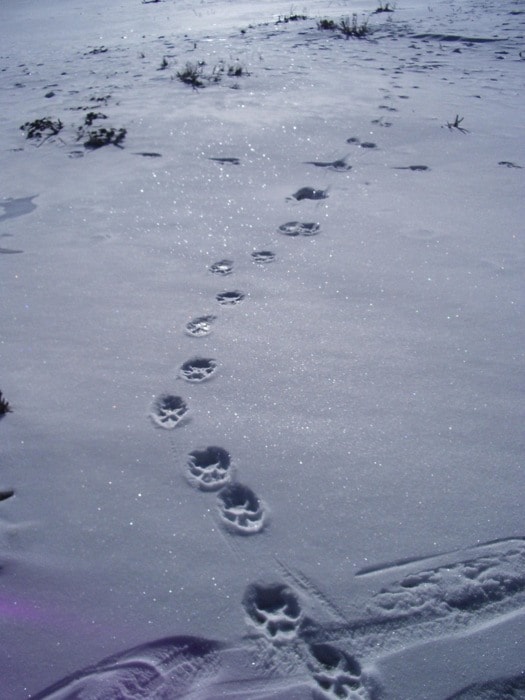Princeton residents can see animal tracks from their doorsteps during the winter, but it’s often difficult to determine exactly what kind of creature left the prints.
While deer and bird tracks are likely the most common prints to be spotted in backyards, many different footprints can be seen in the forest close by.
Telling the difference between wolf and coyote or bobcat and lynx footprints can be impossible for the untrained eye, but Weyerhaeuser’s chief forester Norman Druck aimed to change that for a crowd that packed into a Vermillion Forks Naturalist Society meeting on Jan. 10.
Look at size, number of toes, toenail function and length of stride when trying to figure out which kind of animal has wandered by, he said.
Bobcat vs. lynx
Telling the difference between bobcat and lynx tracks is simple, Druck said.
Lynx eat mostly snowshoe hair, so they need to stay on top of the snow to quickly pounce.
Their tracks are very shallow compared to a bobcat’s, which sink far into the snow.
Bobcats can’t survive easily in deep snow because they sink, Druck said.
“You won’t find bobcat up high in the mountains, because they’ll be picked off by another predator - a cougar for example.
Lynx paw prints are about an inch bigger than a bobcat’s.
Prints from animals in the cat family don’t have their claws showing, unlike those from wolves or coyotes.
In addition, cat-family prints are circular, while dog-family prints are more oval.
Coyote vs. wolf
Coyote and wolves have similar footprints - with some important exceptions.
Wolves have a much longer stride and bigger paws than coyotes
Claws can be seen on both coyote and wolf tracks, unlike those from the cat family that have contacted nails.
“Wolf prints can be as big as a camera case, so watch out for large prints,” Druck said.
“They’re much bigger than coyote’s.”
Weasel family
The area around Princeton is home to many members of the weasel family, including ermine, mink, otter, beaver, marten and wolverine.
Beaver tracks are easy to notice because they drag their heavy tails behind, making the actual footprints hard to see.
Both beaver and otter have webbed feet that allow them to swim fast.
“Some people think beaver hibernate, but they don’t. They swim under the ice during the winter to find food,” Druck said.
